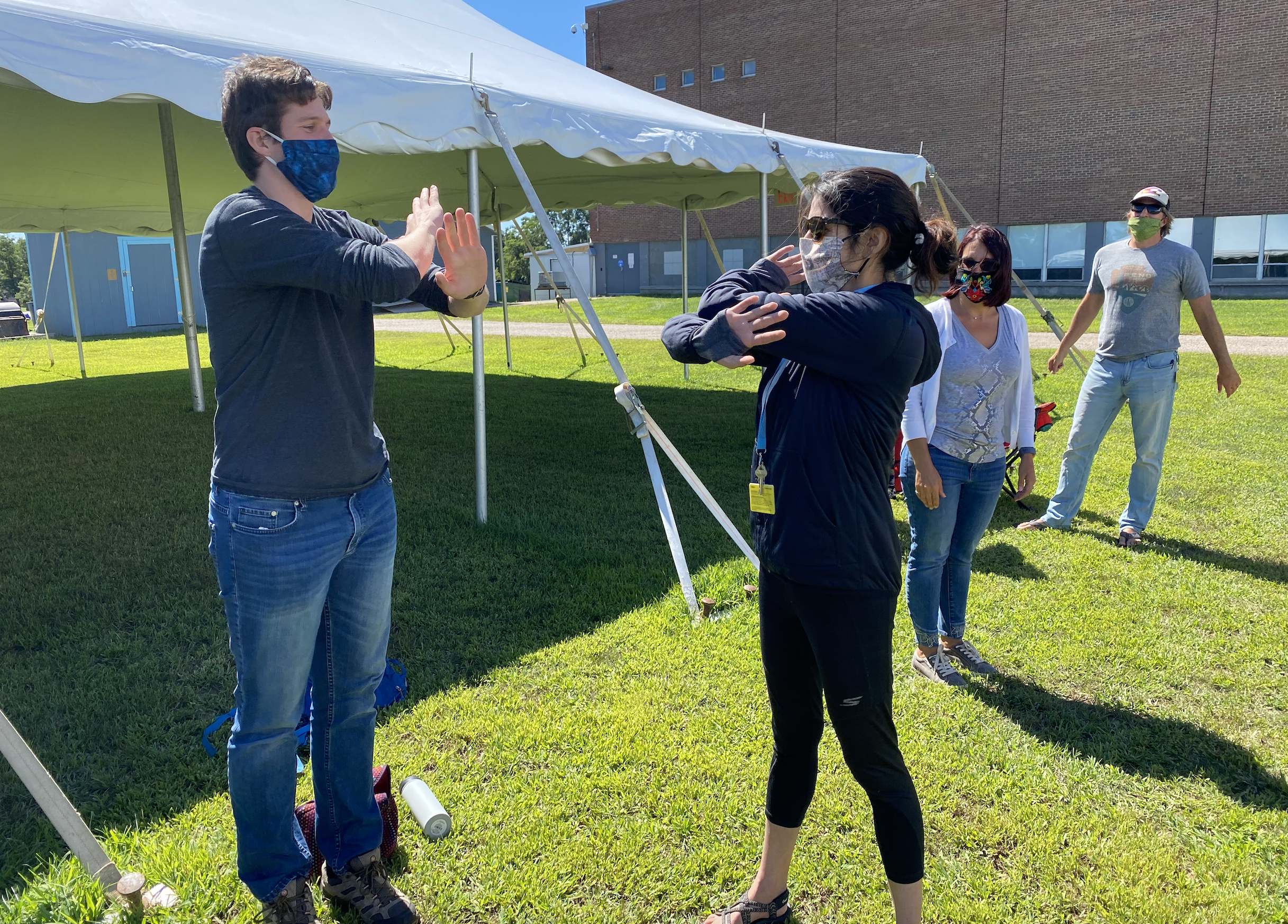
School is back in session be it virtual, face to face or a hybrid of the two. Teachers continue to put forth their best effort to support and advance student learning, despite the many obstacles that are ‘the new normal’. Some of the challenges that we face during this unprecedented time feel insurmountable, and yet, with support of colleagues, giving oneself grace and perspectives and insights from both inside the US and out, there is hope and help available to make ‘the new normal’ more successful than one initially might fear.
Some Challenges and Possible Solutions
While virtual learning or socially distanced learning, at first glance, seems to be very isolated, solitary and perhaps dull, it is possible to add movement and play into the learning environment, virtual or distanced, in order to keep students engaged and learning. Studies show that sitting passively and listening to lecture is the least engaging way to learn. Additionally, despite the fact that students suggest that they prefer low-effort learning strategies, scores show that students in active learning environments perform better. So, add some movement! How, you might ask? There are many approaches one can implement. Some include: have students jump three times to show agreement or squat if they disagree; hold hands up in the air if the answer is yes or down to the ground for no; show on a fist to five (fist being the least with five the most) your understanding of a concept; use each of the four corners of your screen (virtual) or classroom (face to face) for level of understanding or to elaborate on a topic. These are but a few examples. There are a myriad of positive possibilities so let your creativity flow!
There is a perceived challenge to keeping social and emotional learning (SEL) at the forefront of virtual and socially distanced learning environments as the shift in these environments has been uneven and unpredictable. It is essential to embed SEL in all aspects of teaching both to provide connections for the students and also to create a semblance of stability. While we as educators are so often focused on achieving academics perfectly, it is, in this time of Covid, imperative to attend to the emotions of our students. This is an opportunity to educate the whole student by establishing positive relationships with them, modeling empathy and helping them to understand and manage their emotions. While this may sound like a daunting task, making connections with your students can be achieved through creating a safe space for students to take risks and show their authentic selves. This begins with YOU. Model empathy, be curious about your students’ likes and dislikes, ask genuine questions that are relevant to them, and don’t hesitate to share your authentic self with them. The more you truly listen to and demonstrate that you see them and meet them where they are, the more they will feel included, accepted and safe with you and their peers.
Another potential challenge is the idea that we are on our own in this crisis. Because of the differences state by state, county by county and district by district, many teachers feel isolated and unsupported. It is vital that teachers not feel that they must, nor be asked to, reinvent the wheel. This is the perfect opportunity to exercise empathy, unite and create connections forming a global community of educators. We can accomplish this by participating in discussion groups, collaborating with other educators outside of our ‘normal go-tos’, and drawing upon what others are doing. This is the perfect time to join together and share the burden. You are not alone. Let’s take this opportunity to turn our challenges into successes and give ourselves and our students grace, remembering that this is a marathon, not a sprint. Let’s come out of this crisis with a more sustainable education system underpinned by SEL, with teachers more unified and stronger, and students more engaged and invested in their own education.
